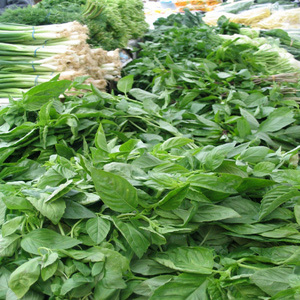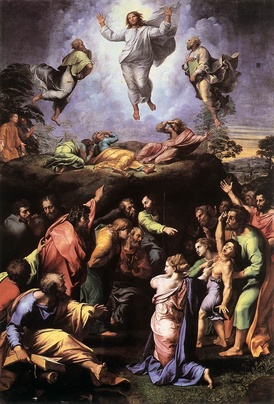 The US Bishops' Committee on Divine Worship launched a new website today (on the liturgical memorial of St Pius X, no less!!!) that pulls together tons of info on the proposed new translation of the Novus Ordo Mass. The aim of the website is to educate us on the forthcoming Roman Missal. All I can say at the moment: THANKS BE TO GOD! What I've seen of the work on the this website looks pretty good and I look forward to more. Poke around...and familiarize yourself with what the Church is proposing in terms of praying the Mass. Notice that we are no longer calling the "big red book used at Mass by the priest" the "sacramentary" but the Roman Missal. The first step is a good one.
The US Bishops' Committee on Divine Worship launched a new website today (on the liturgical memorial of St Pius X, no less!!!) that pulls together tons of info on the proposed new translation of the Novus Ordo Mass. The aim of the website is to educate us on the forthcoming Roman Missal. All I can say at the moment: THANKS BE TO GOD! What I've seen of the work on the this website looks pretty good and I look forward to more. Poke around...and familiarize yourself with what the Church is proposing in terms of praying the Mass. Notice that we are no longer calling the "big red book used at Mass by the priest" the "sacramentary" but the Roman Missal. The first step is a good one.
Sacred Liturgy & Sacraments: August 2009 Archives
 The US Bishops' Committee on Divine Worship launched a new website today (on the liturgical memorial of St Pius X, no less!!!) that pulls together tons of info on the proposed new translation of the Novus Ordo Mass. The aim of the website is to educate us on the forthcoming Roman Missal. All I can say at the moment: THANKS BE TO GOD! What I've seen of the work on the this website looks pretty good and I look forward to more. Poke around...and familiarize yourself with what the Church is proposing in terms of praying the Mass. Notice that we are no longer calling the "big red book used at Mass by the priest" the "sacramentary" but the Roman Missal. The first step is a good one.
The US Bishops' Committee on Divine Worship launched a new website today (on the liturgical memorial of St Pius X, no less!!!) that pulls together tons of info on the proposed new translation of the Novus Ordo Mass. The aim of the website is to educate us on the forthcoming Roman Missal. All I can say at the moment: THANKS BE TO GOD! What I've seen of the work on the this website looks pretty good and I look forward to more. Poke around...and familiarize yourself with what the Church is proposing in terms of praying the Mass. Notice that we are no longer calling the "big red book used at Mass by the priest" the "sacramentary" but the Roman Missal. The first step is a good one.
Another version of a blessing of herbs or flowers on the Solemnity of the Assumption. In this case though, the blessing is taken from the Byzantine ritual and so we ought to say the "Dormition", this is the proper term in the East for what the Latins call the Assumption of Mary.
O almighty, eternal God, by your word alone You created out
of nothing the heavens, earth, sea, and all things visible and invisible. You
commanded that the earth give forth plants and trees for the needs of man and
animal, each according to its need. In your infinite goodness You ordained that
these plants serve not only as food for the animals but also as medicine for
the sick body. We beseech you, bless these different plants and fruits and
bestow upon them your blessing, and endow them with your power, so that they
may serve man and animal like as a defense against all sickness and all that is
impure: for You are our God and we give glory to You, Father, Son, and Holy
Spirit, now and ever, and forever. Amen.
These flowers (or: plants) are blessed and sanctified by the sprinkling of this holy water in the name of the Father, and of the Son, and of the Holy Spirit. Amen.
It is customary in the Western Church, since at least the 10th century, for the priest to bless herbs on the Solemnity of the Assumption. The Eastern Church likely had a similar formulary much earlier.
As a point of liturgical fact, the Church asks God to bless herbs and flowers --and thus us-- to remind all of us of the gifts God has given us for our sustenance, healing and beauty. In many places the faithful had all their flowers blessed, especially those closely associated with the Blessed Virgin Mary. Herbs blessing, therefore, is another example of giving thanks, a key theological and liturgical point in our life of faith. While customary it is not likely to be used in many parishes. The collects for the herbs blessing rich and savory.
The Directory on Popular Piety and the Liturgy (2001) says of herbs blessing:

The Assumption of the Blessed Virgin Mary (15 August) is deeply imbedded in popular piety. In many places the feast is synonymous with the person of Our Lady, and is simply referred to as "Our Lady's Day" or as the "Immacolada" in Spain and Latin America.
In the Germanic countries, the custom of blessing herbs is associated with 15 August. This custom, received into the Rituale Romanum (200), represents a clear example of the genuine evangelization of pre-Christian rites and beliefs: one must turn to God, through whose word "the earth produced vegetation: plants bearing seeds in their several kinds, and trees bearing fruit with their seed inside in their several kinds" (Gen 1, 12) in order to obtain what was formerly obtained by magic rites; to stem the damages deriving from poisonous herbs, and benefit from the efficacy of curative herbs.
This ancient use came
to be associated with the Blessed Virgin Mary, in part because of the biblical
images applied to her such as vine, lavender, cypress and lily, partly from
seeing her in terms of a sweet smelling flower because of her virtue, and most
of all because of Isaiah 11, 1, and his reference to the "shoot springing
from the side of Jesse", which would bear the blessed fruit of Jesus.
The Order of Blessing of Herbs is found here.


